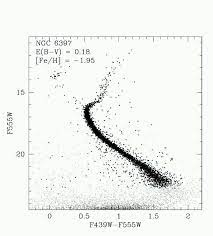Astronomers using the Hubble Space Telescope HST have made a groundbreaking discovery in the study of globular clusters, uncovering a remarkably extended horizontal branch in the globular cluster NGC 1835. This finding, reported on the preprint server arXiv on February 28, represents the first time such a feature has been observed in a globular cluster beyond our Milky Way galaxy.
Globular clusters are dense collections of tightly bound stars orbiting galaxies, offering astronomers valuable insights into the evolution of stars and galaxies. NGC 1835, an old and massive globular cluster located near the central bar of the Large Magellanic Cloud LMC, has been the subject of intense study by a team of astronomers led by Camilla Giusti of the University of Bologna in Italy.
In their investigation, the researchers utilized optical and near ultraviolet images obtained with the HST to analyze the stellar population of NGC 1835. Their aim was to characterize the oldest and most compact stellar systems in the LMC, shedding light on the formation history and evolution of early-type galaxies.
One of the most significant findings of this study is the identification of a very extended blue tail of the horizontal branch H) in NGC 1835. The HB is a grouping of stars on the Hertzsprung-Russell diagram, representing stars that have passed through the red-giant branch RGB and have begun helium fusion in the core, surrounded by a shell of hydrogen fusion.
The extended nature of the HB in NGC 1835 spans more than 4.5 magnitudes in both magnitude and color, covering effective temperatures from 5,000 to 30,000 K. This feature is comparable to those observed in a few cases in our galaxy, such as globular clusters M3 and M13, but has never been detected before in an extragalactic cluster.
The discovery of an extended horizontal branch in NGC 1835 opens new avenues for understanding the stellar populations and evolutionary processes within globular clusters. Further studies of NGC 1835 and similar clusters in the LMC will be instrumental in unraveling the complexities of galaxy evolution and the role of globular clusters in shaping the universe.


